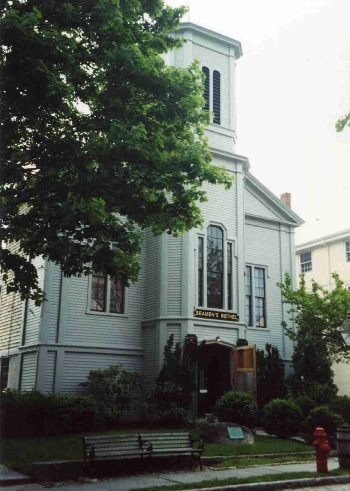
New Bedford
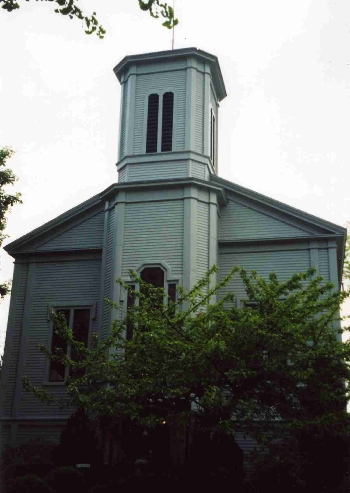
| Route 66 | Cities | Beaches |
 |
New Bedford |
 |
 |
New Bedford is critical to understanding the whaling industry, since it was headquartered here. Ships were built and serviced in Mystic, Nantucket considered whaling its passion, but New Bedford was where the business was run. Here companies handled accounting, contracts, personnel..Men came here seeking a berth on the big ships, even if they took a ferry out to Nantucket to actually board one. Today, this is where the library and museum are, and where the research is done. | 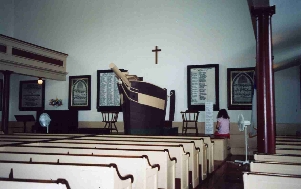 |
|
It was to New Bedford that Herman Melville came to start his own whaling career, and where the opening scenes of Moby Dick are set. The Melville Society and Whaling Historical Society headquarter here. Many buildings described by Melville still stand, and it is interesting to open the novel to one of those descriptive passages while looking at the exact same scene two centuries later. Start with the Whaleman's Bethel, shown in four photos above. The top two are of the front entrance, which looks precisely as Melville describes it. The next two photos are inside. The famous ship's prow pulpit, described in the novel and pictured in both film versions, is still used every Sunday and Wednesday for sermons. Wall plaques commemorating men lost at sea in whaling incidents, especially those who went down at sea in ships sunk by the Great White Whale, still testify to the dangers of America's first major industry, and to the power, mystery and threat the giant sperm whale represented in 1850. Father Josiah Mapple, himself a former whaler who served as minister here for 30 years, tailored his sermons to the whaling audience. He featured lessons on Jonah and the Whale, Christ walking on water, Peter the Fisherman, etc. The big casks shown here were what the whalers brought back. Before the discovery of petroleum in Pennsylvania, whale oil was the only oil known to man. It was produced by cutting off strips of blubber from dead whales, lowering it into cooking vats, and reducing it to a clear, pure sweet smelling oil. The lamps lining the streets of British, European and American cities, and the lamps in homes and offices, burned whale oil. It was just as essential then as the other oil is now, and companies then made just as big a profit from it as the oil corporations do now. The critical element of whale oil was that it burned with no odor or smoke, making it usable indoors. Whaling ships would theoretically sail on three year voyages, but actually they would come back when their holds were full of oil. If they filled up after 18 months, they turned for home. If needed, they could stay out for four or even five years, trading other whale products for more supplies in ports they came to. In addition to the oil, they extracted whalebone, which filled the role then that plastics do now; whale steak, considered a real delicacy back then; and ambergris, which was made into the perfumes of the day. Whalers were paid in shares of the ship's profits. The more experienced and skilled men received more shares. But any man who survived a whaling cruise received a substantial paycheck. |
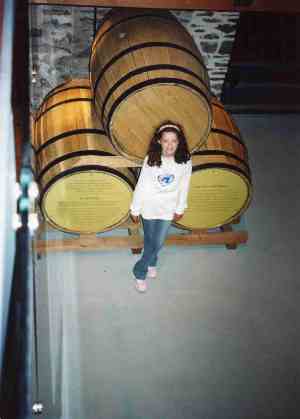 |
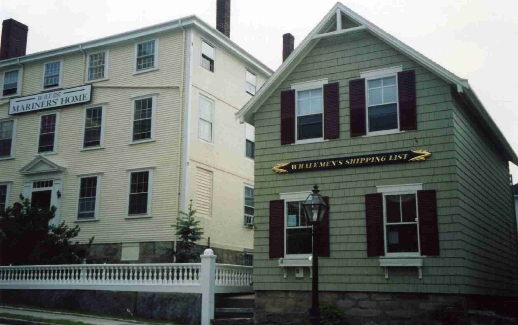 |
The biege building on the left is a retired whalers' home, where old whalemen could spend their remaining years. This is on a hill overlooking the harbor, so the men could still see ships coming and going and wander two blocks down to the waterfront to reminisce. This is the only such home that has been preserved. Others are still standing but have been converted to other uses. The green house was a busy place in the 1800s. It housed the Whalers List, the rosters of every whaling ship out at sea. Wives, mothers, daughters and girlfriends would check here for news of their men. Even though whaling ships travelled the whole world in a century before electronics, their whereabouts were tracked surprisingly well. Ships would see each other frequently, and would pull into distant ports for fresh water, fruit and vegetables, or repairs. Messages and mail would then be relayed from ship to ship until they reached New Bedford. Whalers Lists from all those years have been carefully preserved and are now on computers, allowing research on ships, crews or individuals. |
|
The inn shown to the right was Peter Coffin's. Herman Melville spent two nights in New Bedford here while waiting to catch the Nantucket ferry. In his novel he had Ishmael stay here. This was where Ishmael met Queequeg. Melville rented the upstairs corner room described in the novel as Ishmael's, facing this direction with one window over the red sign and the other looking out over the porch. Downstairs is the tavern with the whale painting behind the bar where the men ate and drank and sang old whaling songs. In Melville's day the Coffin House sat on top of the hill about two blocks from the docks with a clear view of Buzzards Bay. Today they've artificially extended out the water front so the house is not as close, and more recent buildings now block its view. This building was in serious decline and threatened with demolition when the Foundation bought and restored it. None of the oriiginal furniture remains, not even the famous whale painting behind the bar. |
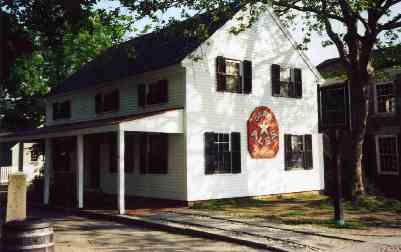 |
|
|
Like the auto and petroleum industries, whaling created the need for supporting businesses, and the streets of New Bedford were lined with various shops and manufacturing facilities for blocks leading up the hills from the waterfront. Men were kept busy making sails, ropes, harpoons, casks, cutting spades, accounting books, pens; specialized clothing which could withstand sun, salt air, bitter cold, and continued drenching with salt water; compasses, sextants, telescopes, ladels, and maps, which were being continuously updated to keep up with new information constantly arriving. Many of these businesses were run by former whalers, who after years at sea decided to take their earnings, buy or start a business, marry, and lead a much safer life. Whaling was a young man's game, like pro sports are today. The key was to make your fortune, then get out before you lost a leg or arm or your life. There was also a need for hotels, boarding houses, inns, pubs and taverns to service not only the whalers departing or arriving on the ships, but the businessmen coming to buy oil, whalebone, whalesteak or ambergris, or sell various specialized supplies. You should stop at the national park visitor center and the recently enlarged museum, walk up and down a few of the cobblestone streets leading to the waterfront, and check out a few of the stores, especially the whaling souvenir outlet down the block from the museum. This may be your only chance to buy an authentic cast iron harpoon. We only have two weeks, so we recommend only a half day New Bedford stop before getting back on I-195, 6, 132 and 28 heading for Hyannis Port and the Nantucket Ferry. There are ferries running from New Bedford directly to Nantucket, such as the one Melville and the whalers took. But when we get back off the ferry, we want to have a shorter drive to Provincetown, so we're going to recommend driving over to Hyannis Port today. |
|
|||
|